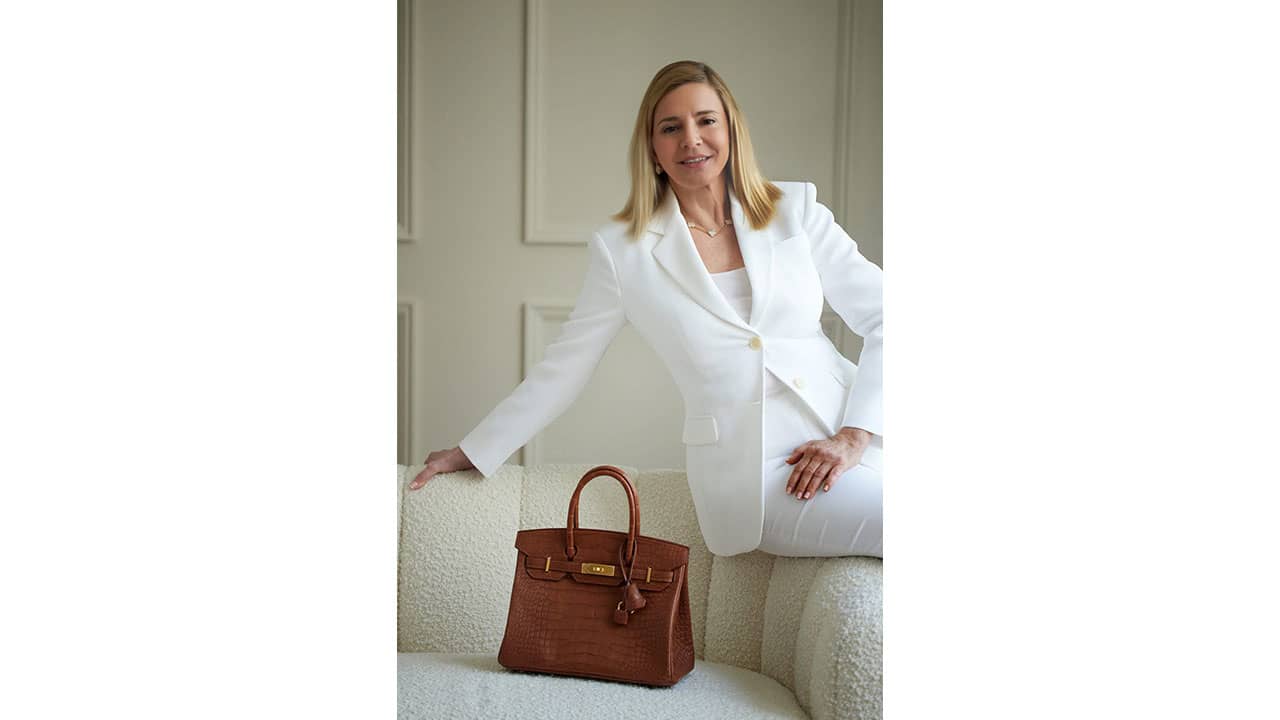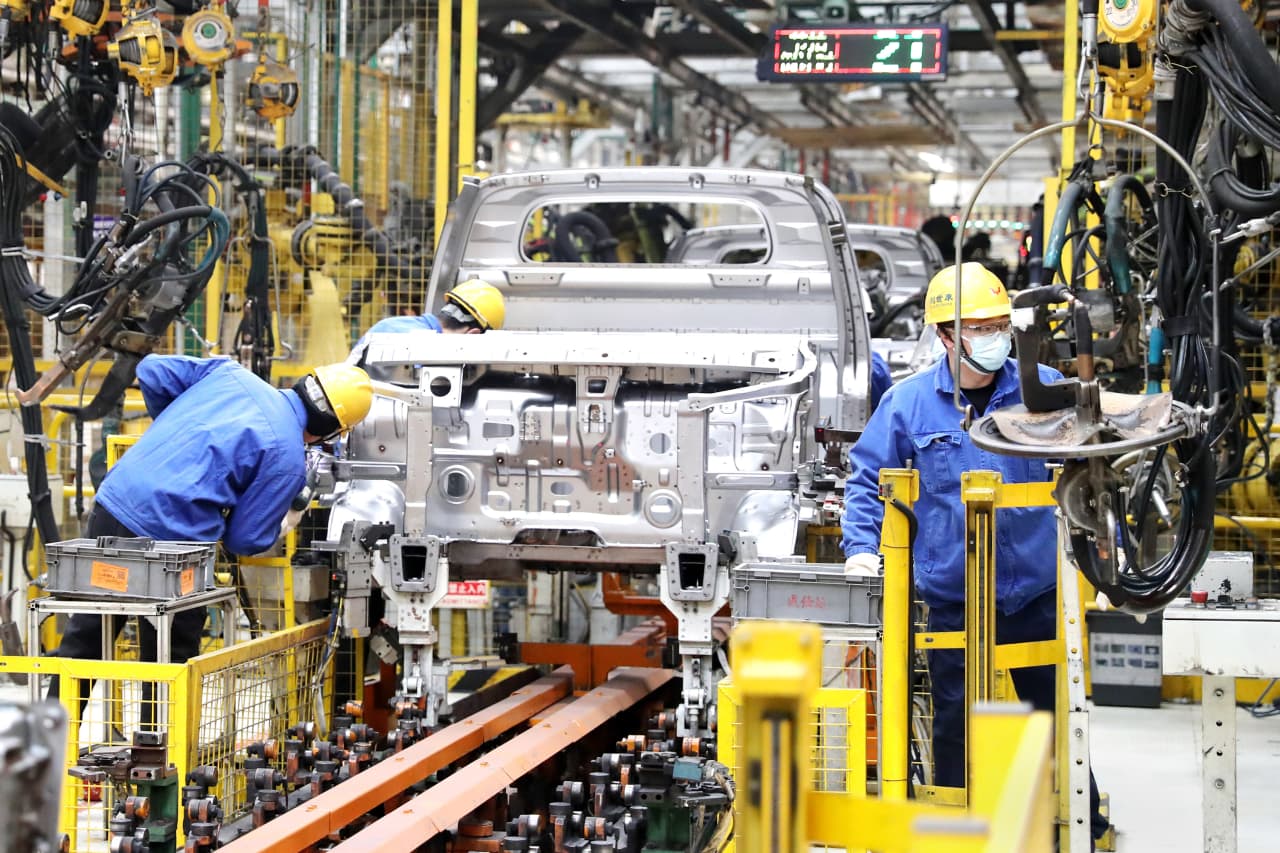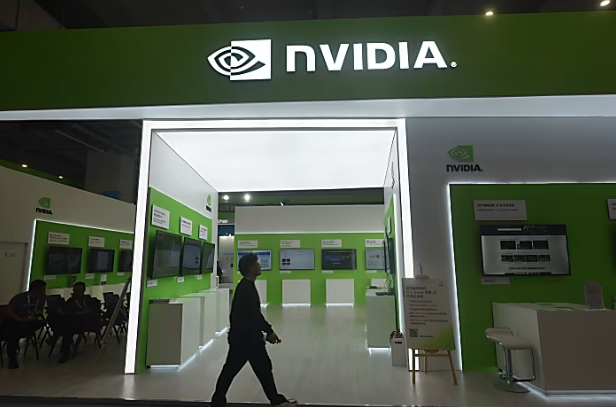The impetus for Judy Taylor to start her luxury handbag and jewellery resale company Madison Avenue Couture dates back to her career in investment banking more than two decades ago. At the time, she was an avid shopper for high-end clothing and had built a sizeable collection of corporate wear from designer labels.
Taylor eventually took an extended break from banking to travel the world and decided to sell the clothing on eBay.
“I was surprised at the money I netted by selling these used items and realized the potential of the online resale market,” Taylor says. “Not being someone to let an opportunity pass, I began to buy and sell new and almost new luxury clothing, shoes and handbags and saw how much they were in demand.”
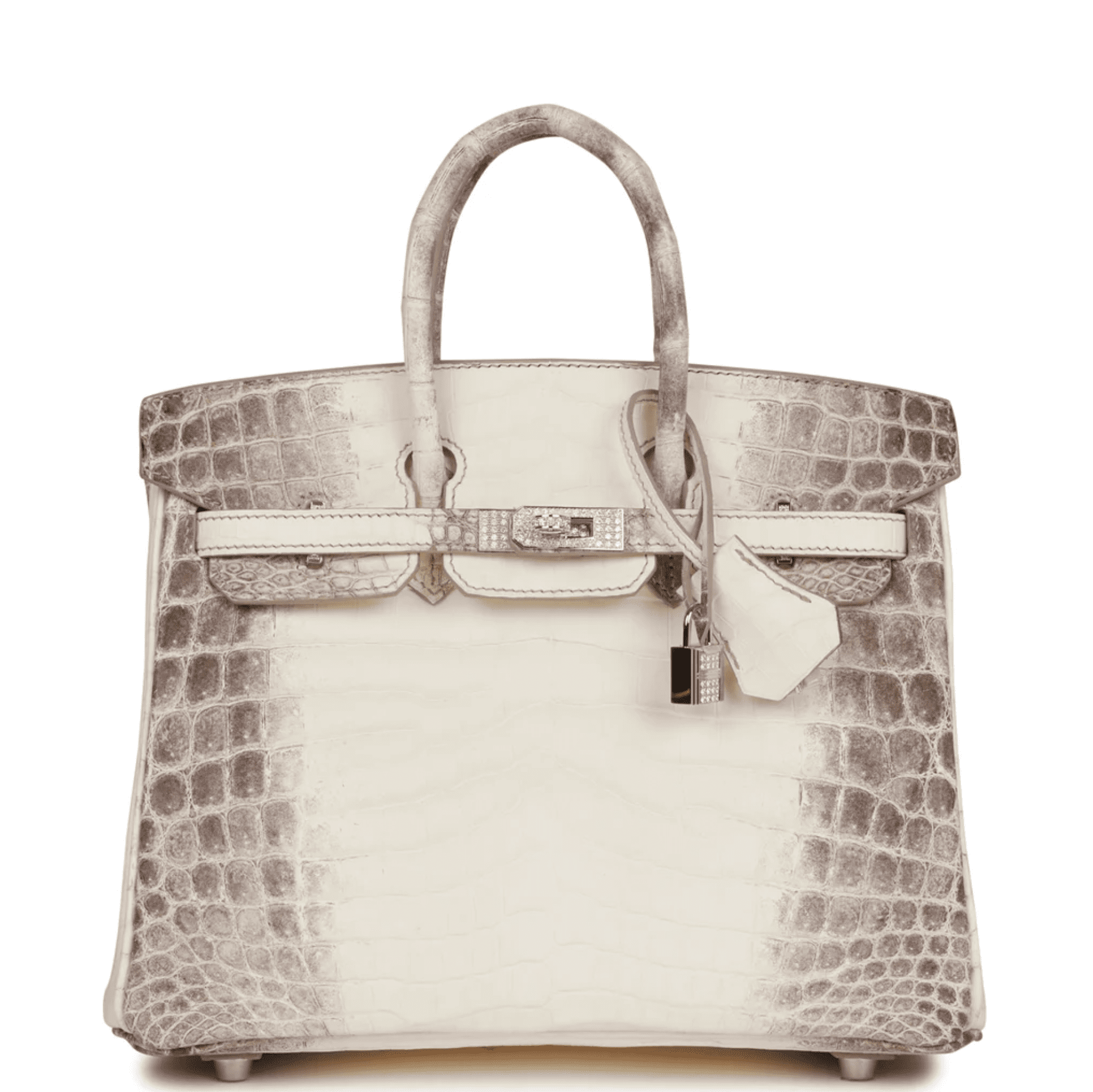
Courtesy of Madison Avenue Couture
Her homespun venture quickly grew into a full-fledged profitable business, and in 2010, she established Madison Avenue Couture. Today, the brand bills itself to be the largest online independent reseller of new and never-worn Hermès holy grail bags, primarily Birkins and Kellys that are nearly impossible to find. It also sells a selection of pre-owned collectible and vintage Hermès, Chanel, Goyard, and Louis Vuitton bags, Hermès and Chanel jewellery, and accessories and sought-after fine jewellery.
Taylor says that her company enables any consumer with the means to buy highly in-demand goods.
“You can’t just go into Hermès and buy a Birkin because there usually aren’t any available, and if they are, customers are limited to buying two bags a year,” she says. “Chanel has also limited purchases since Covid, and other brands have imposed restrictions.”
According to Taylor, these tactics have increased market demand and have enabled luxury labels to increase their prices. However, since supply cannot meet demand, consumers are increasingly reaching out to the resale market, including her company, for these items.
“Our business continues to grow, and we have an extensive network to source handbags and jewellery,” Taylor says. “Unlike much of the traditional resale market, our items are primarily new and never used and carry a premium over [the] retail price.”
Taylor, 59, speaks with Penta about her company and the luxury resale market overall.
Can you talk about how the luxury resale market for handbags and jewelry has evolved in recent years, especially since the pandemic?
About three weeks into the pandemic, we started getting orders. They were slow at first but then accelerated.
With retail stores closed and travel restricted, people turned online to shop. The only place to purchase new Hermès and Chanel handbags was online and from dealers on the secondary market. They became comfortable with buying these brands online. Sales increased by 60% in 2020 and doubled in 2021, compared to the prior years. Even after the brand boutiques opened and travel resumed, online sales continued their momentum. Our sales quadrupled from 2019 to 2023.23.
Who are your customers, and have they changed over the years?
Our clients are primarily those who have disposable income and love to spend it on beautiful things. Partners of hedge funds, investment bankers and law firms, self-made entrepreneurs, physicians and dentists, celebrities and socialites represent the bulk. But we always have the aspiring—those for whom buying a Birkin or Kelly is a bit of a financial stretch.
What are the advantages of buying a resale bag or piece of jewellery?
Hermès and Chanel do not offer their handbags online. While Hermès.com may offer one or a few small bags on occasion, they are sold out in seconds. The same goes for branded jewellery, notably Van Cleef & Arpels. Try purchasing a popular VC&A Alhambra piece online or in one of their stores to take home immediately—it is almost impossible.
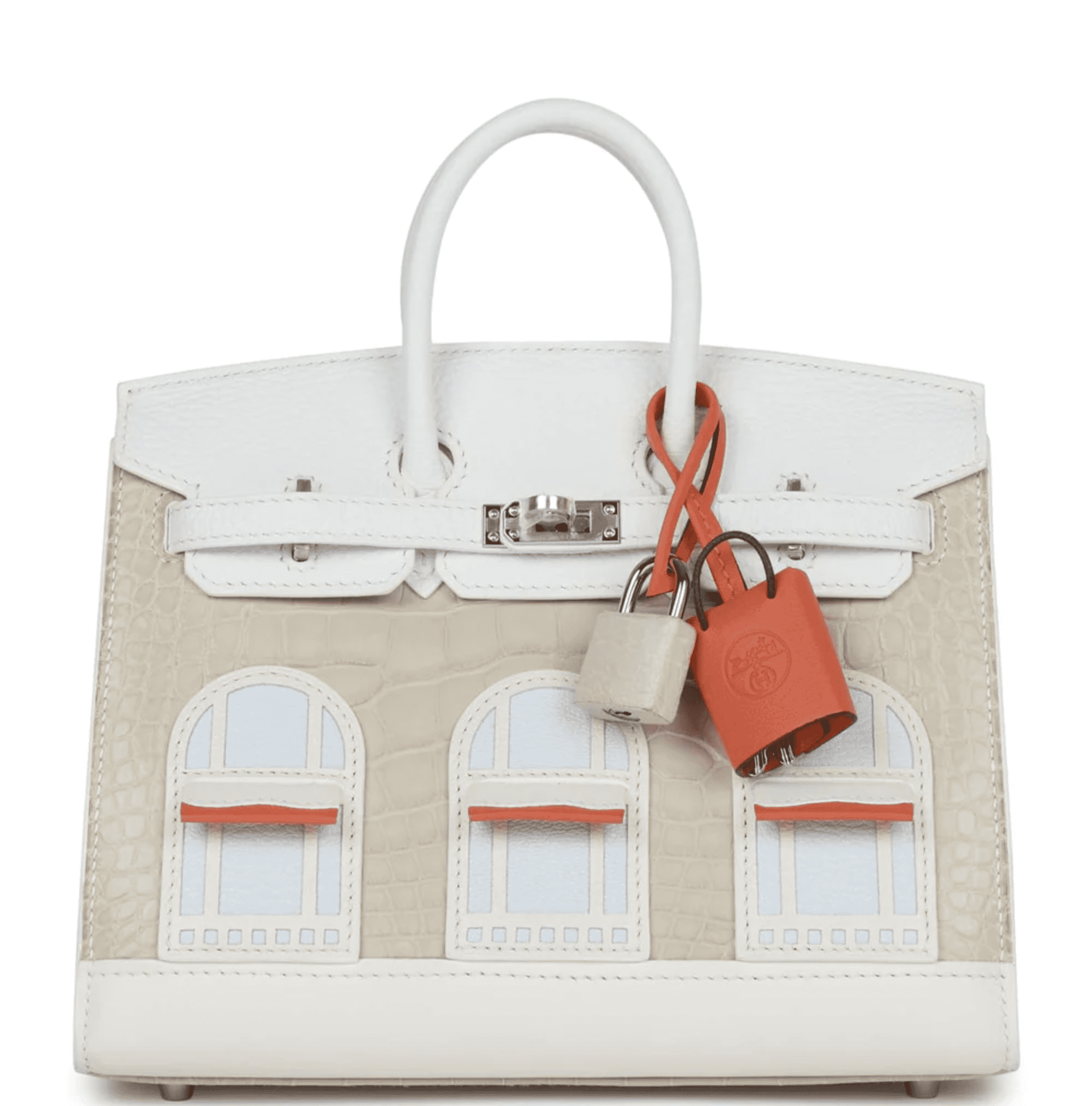
Madison Avenue Couture
The second is ease of purchase. Hermès has made getting a holy grail bag almost a “blood sport.” The machinations that someone goes through to get a Birkin or Kelly are anxiety-producing for most. First, you need to find a friendly sales associate. Then, a profile must be built, which involves spending on Hermès goods that are not leather handbags. The more the spend, the greater the chance of getting a handbag. Expensive furniture, fine jewelry, and watches have the greatest sway. Scarves or a pair of shoes won’t bat an eyelash. The amount needed to be spent is unknown, but we’ve heard it could be significantly more than the price of the bag. Plus, there is no guarantee that it will result in getting the bag of your dreams.
In the secondary market, you can pick the bag of your dreams without the hassle and stress of building a profile.
How do you source your items, and how are you able to guarantee their authenticity?
We purchase from individuals and other handbag dealers primarily. We usually get the original store receipt or a copy of it for most bags we purchase, which establishes provenance. Regardless of having the receipt or not, every bag goes through in-house and third-party authentication. We chose who we believe to be the best independent authenticators of Hermès and Chanel, which is where we find the most counterfeits.
What are some of the most in-demand brands and items for buyers who can afford them?
Hermès and Chanel handbags are generally in demand by professional and affluent women and men who give them as gifts. Goyard is popular because it evokes quiet luxury. In jewelry, we see the greatest demand is for Van Cleef & Arpels pieces, particularly the Alhambra series.
What advice do you have for people who want to find a specific piece from a source outside of the brand itself?
We recommend that people purchase only from dealers who guarantee authenticity and have a history of selling only authentic bags.
Furthermore, rely on a reseller that has its inventory on hand like us. We have already checked the condition, verified authenticity, and confirmed availability. Marketplaces, which aggregate different vendors, cannot know for certain if an item is available, in the stated condition or authentic. (Some authenticate after the item is sold, which delays getting the item.) Resellers that do not have an item in stock will source it, which can take weeks and may not be in the condition described.
This interview has been edited for length and clarity.
 Copyright 2020, Dow Jones & Company, Inc. All Rights Reserved Worldwide. LEARN MORE
Copyright 2020, Dow Jones & Company, Inc. All Rights Reserved Worldwide. LEARN MORE
What a quarter-million dollars gets you in the western capital.
Alexandre de Betak and his wife are focusing on their most personal project yet.
Multinationals like Starbucks and Marriott are taking a hard look at their Chinese operations—and tempering their outlooks.
For years, global companies showcased their Chinese operations as a source of robust growth. A burgeoning middle class, a stream of people moving to cities, and the creation of new services to cater to them—along with the promise of the further opening of the world’s second-largest economy—drew companies eager to tap into the action.
Then Covid hit, isolating China from much of the world. Chinese leader Xi Jinping tightened control of the economy, and U.S.-China relations hit a nadir. After decades of rapid growth, China’s economy is stuck in a rut, with increasing concerns about what will drive the next phase of its growth.
Though Chinese officials have acknowledged the sputtering economy, they have been reluctant to take more than incremental steps to reverse the trend. Making matters worse, government crackdowns on internet companies and measures to burst the country’s property bubble left households and businesses scarred.
Lowered Expectations
Now, multinational companies are taking a hard look at their Chinese operations and tempering their outlooks. Marriott International narrowed its global revenue per available room growth rate to 3% to 4%, citing continued weakness in China and expectations that demand could weaken further in the third quarter. Paris-based Kering , home to brands Gucci and Saint Laurent, posted a 22% decline in sales in the Asia-Pacific region, excluding Japan, in the first half amid weaker demand in Greater China, which includes Hong Kong and Macau.
Pricing pressure and deflation were common themes in quarterly results. Starbucks , which helped build a coffee culture in China over the past 25 years, described it as one of its most notable international challenges as it posted a 14% decline in sales from that business. As Chinese consumers reconsidered whether to spend money on Starbucks lattes, competitors such as Luckin Coffee increased pressure on the Seattle company. Starbucks executives said in their quarterly earnings call that “unprecedented store expansion” by rivals and a price war hurt profits and caused “significant disruptions” to the operating environment.
Executive anxiety extends beyond consumer companies. Elevator maker Otis Worldwide saw new-equipment orders in China fall by double digits in the second quarter, forcing it to cut its outlook for growth out of Asia. CEO Judy Marks told analysts on a quarterly earnings call that prices in China were down roughly 10% year over year, and she doesn’t see the pricing pressure abating. The company is turning to productivity improvements and cost cutting to blunt the hit.
Add in the uncertainty created by deteriorating U.S.-China relations, and many investors are steering clear. The iShares MSCI China exchange-traded fund has lost half its value since March 2021. Recovery attempts have been short-lived. undefined undefined And now some of those concerns are creeping into the U.S. market. “A decade ago China exposure [for a global company] was a way to add revenue growth to our portfolio,” says Margaret Vitrano, co-manager of large-cap growth strategies at ClearBridge Investments in New York. Today, she notes, “we now want to manage the risk of the China exposure.”
Vitrano expects improvement in 2025, but cautions it will be slow. Uncertainty over who will win the U.S. presidential election and the prospect of higher tariffs pose additional risks for global companies.
Behind the Malaise
For now, China is inching along at roughly 5% economic growth—down from a peak of 14% in 2007 and an average of about 8% in the 10 years before the pandemic. Chinese consumers hit by job losses and continued declines in property values are rethinking spending habits. Businesses worried about policy uncertainty are reluctant to invest and hire.
The trouble goes beyond frugal consumers. Xi is changing the economy’s growth model, relying less on the infrastructure and real estate market that fueled earlier growth. That means investing aggressively in manufacturing and exports as China looks to become more self-reliant and guard against geopolitical tensions.
The shift is hurting western multinationals, with deflationary forces amid burgeoning production capacity. “We have seen the investment community mark down expectations for these companies because they will have to change tack with lower-cost products and services,” says Joseph Quinlan, head of market strategy for the chief investment office at Merrill and Bank of America Private Bank.
Another challenge for multinationals outside of China is stiffened competition as Chinese companies innovate and expand—often with the backing of the government. Local rivals are upping the ante across sectors by building on their knowledge of local consumer preferences and the ability to produce higher-quality products.
Some global multinationals are having a hard time keeping up with homegrown innovation. Auto makers including General Motors have seen sales tumble and struggled to turn profitable as Chinese car shoppers increasingly opt for electric vehicles from BYD or NIO that are similar in price to internal-combustion-engine cars from foreign auto makers.
“China’s electric-vehicle makers have by leaps and bounds surpassed the capabilities of foreign brands who have a tie to the profit pool of internal combustible engines that they don’t want to disrupt,” says Christine Phillpotts, a fund manager for Ariel Investments’ emerging markets strategies.
Chinese companies are often faster than global rivals to market with new products or tweaks. “The cycle can be half of what it is for a global multinational with subsidiaries that need to check with headquarters, do an analysis, and then refresh,” Phillpotts says.
For many companies and investors, next year remains a question mark. Ashland CEO Guillermo Novo said in an August call with analysts that the chemical company was seeing a “big change” in China, with activity slowing and competition on pricing becoming more aggressive. The company, he said, was still trying to grasp the repercussions as it has created uncertainty in its 2025 outlook.
Sticking Around
Few companies are giving up. Executives at big global consumer and retail companies show no signs of reducing investment, with most still describing China as a long-term growth market, says Dana Telsey, CEO of Telsey Advisory Group.
Starbucks executives described the long-term opportunity as “significant,” with higher growth and margin opportunities in the future as China’s population continues to move from rural to suburban areas. But they also noted that their approach is evolving and they are in the early stages of exploring strategic partnerships.
Walmart sold its stake in August in Chinese e-commerce giant JD.com for $3.6 billion after an eight-year noncompete agreement expired. Analysts expect it to pump the money into its own Sam’s Club and Walmart China operation, which have benefited from the trend toward trading down in China.
“The story isn’t over for the global companies,” Phillpotts says. “It just means the effort and investment will be greater to compete.”
Corrections & Amplifications
Joseph Quinlan is head of market strategy for the chief investment office at Merrill and Bank of America Private Bank. An earlier version of this article incorrectly used his old title.





